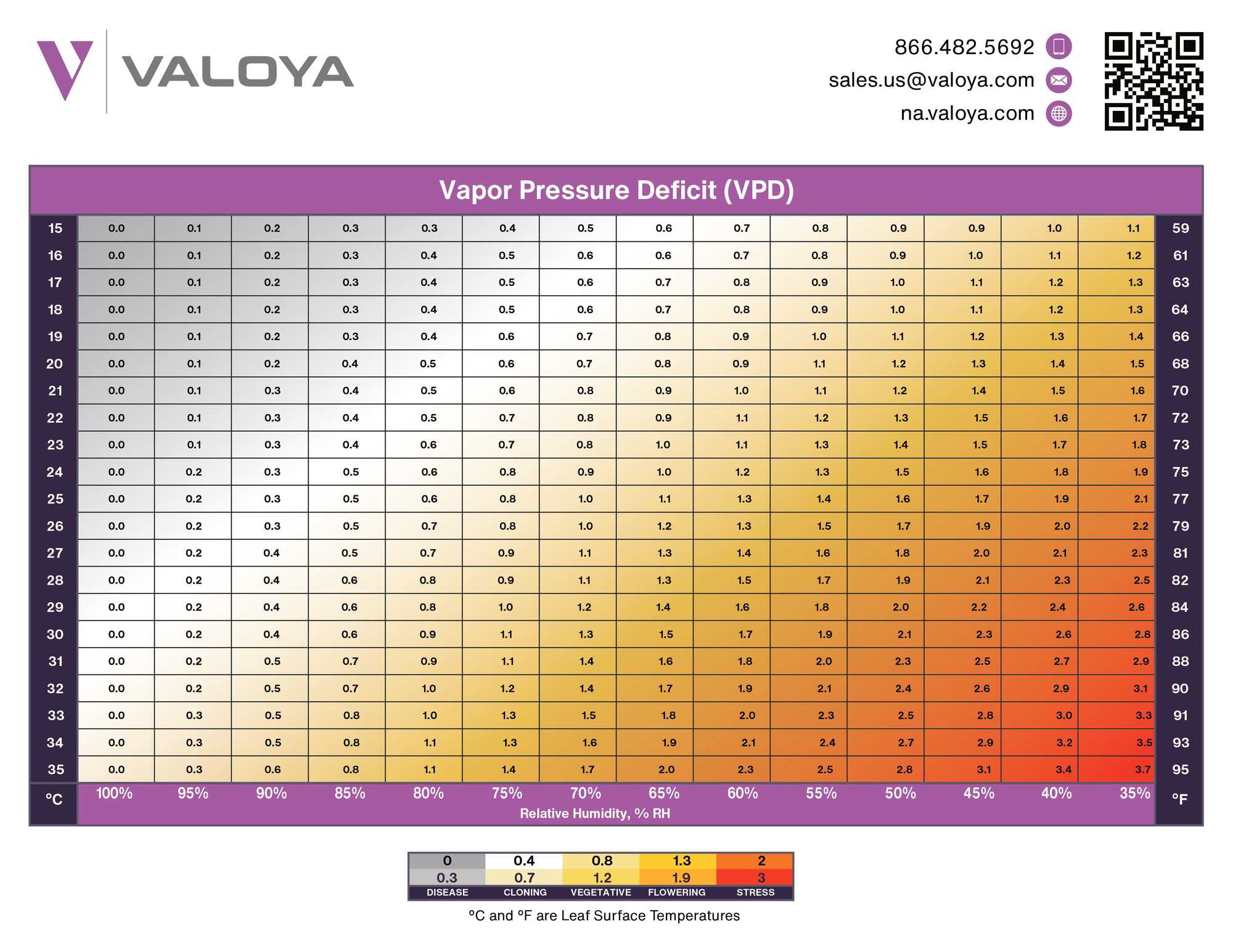Free VPD Chart
Monitoring and managing your Vapor Pressure Deficit are crucial to success with LED cultivation. Add this VPD chart to your reference materials.
VPD and How to Use It
Vapor Pressure Deficit (VPD), sometimes called Vapor Pressure Difference, is the difference between the amount of moisture in the air and how much it can hold when fully saturated. When the air becomes fully saturated with moisture it will condense and collect on surfaces. This is why greenhouse operations have been monitoring VPD for a very long time.
VPD is a relatively new concept for indoor growers. Five years ago, it was seldom a topic of discussion. However, it has now become a widely discussed and monitored subject within the growing community.
The primary significance of VPD lies in its ability to forecast a plant's transpiration capacity. When the air is overly saturated, indicating a low VPD, the transpiration process slows down or, at its extreme, halts entirely. Conversely, when the air is exceptionally dry, indicative of a high VPD, plants may find it challenging to transpire sufficiently.
Fun Fact: Both boron and calcium are moved throughout the plant via transpiration and not chemical processes. Getting VPD right is key to proper plant nutrition.
Ambient (Room Air) vs Leaf Surface Temperature
Grow rooms utilizing carefully calibrated LED lighting systems can maintain leaf surface temperatures that are slightly cooler than the surrounding ambient air. In contrast, rooms lit by High-Intensity Discharge (HID) lighting often exhibit leaf surface temperatures that are noticeably higher than the ambient air, regardless of their design. This temperature differential can be attributed to the HID spectrum's significant far-red component, reminiscent of traditional bathroom heaters, which effectively warms the plant's leaves and stems.
The location of your temperature measurements can matter. Plants in LED grow rooms tend to have similar temperatures from the top to the bottom of the plant. However, in HID grow rooms the top of a plant can be several degrees warmer than the bottom due to increased convective heat transfer.
Working with VPD
To work out your VPD you will need a temperature “gun” and a humidistat (humidity gauge). Take multiple canopy temperature readings and average them out. With good airflow, humidity tends to be fairly constant so a single humidity reading can be used.If you’re using a Building Management System to control your environment you will need to “work out” your settings for the ambient temperature. Take multiple measurements of different plants in different parts of the grow room. Average these measurements. Make adjustments
Take the average leaf temperature along with your humidity readings and look up your VPD on the chart above/below. Find your leaf temperature on either side, then move across the row until you cross with your humidity. That cell will contain your VPD. It’s just that easy!

Download the VPD Chart Here
Cultivate Perfect Growth & Unleash Plant Potential!

